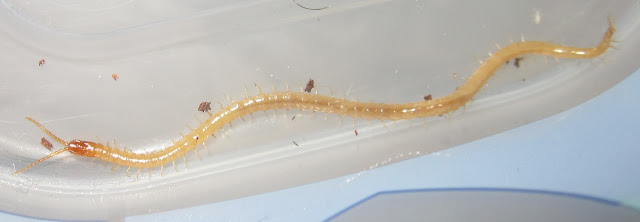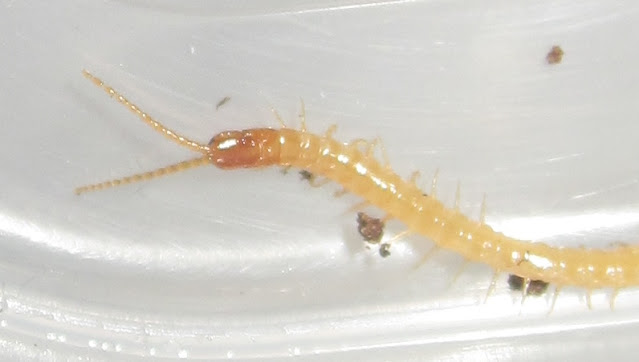First off, I found three Rhadine sp., under wooden boards on the ground in scrubland habitat, normally near Reticulitermes hesperus colonies. I've never seen this genus before, and with how leggy and fast they are, along with their unique body shape, I initially mistook them for the large Camponotus ants in the same area. 😂
I submitted pictures of them to Bugguide, and they were tentatively ID'd by an expert as Rhadine jejuna, so I shall refer to them as Rhadine cf. jejuna until further notice.
I found three, though sadly one has passed away now, so I'm down to two. I've been keeping them in a well ventilated deli cup with an inch or so of coco fiber as the substrate, with bark hides and leaf litter for cover. I'm keeping them at room temps and have half the enclosure humid, the rest dry. Been feeding them dog food and also have some live Compsodes in there for them to snack on if they want to. IDK if they'll breed in that setup, they'll probably need a different substrate to do so.
Anyways, here are some pics of one of the little weirdos:
Cool right? Even if I don't breed them, it's an awesome find IMO.
Lastly, I found half a dozen soil centipedes, Geophilomorpha sp., a group that is very numerous and found across the world. However, a lot of common backyard species only max out at an inch or two, and some are adventives. Whereas these seem to reach at least three inches, and were only found in scrubland habitat fairly far removed from the nearby neighborhood (and in said neighborhood, smaller, differently colored Geophilomorpha species were the dominant ones). So who knows, this one may very well be native, and it's certainly the largest soil centipede species I've come across.
I've got them housed in a moderately ventilated deli cup with a few inches of coconut fiber as the substrate, with leaf litter and such on top as hides. I'm keeping them at room temps, pretty humid, and am feeding them a variety of prekilled inverts, some smaller live ones, and dog food and fruits. These centipedes tend to scavenge a lot so I'm just offering them everything lol, and so far they've been doing well. 😁 I am also keeping them communally, since soil centipedes often do well in communal setups so long as there's enough space and food.
Here are some pics of one of them:
We'll see what comes of this, hopefully I'm successful with them since this is a group of centipedes that really interests me. Some of the tropical species can get 10 inches or so in length, and there's a small species in France that even glows in the dark! So I would love to delve into this group more in the future. 😊
Anyways, that's gonna do it for this post, thanks for reading, hope everyone enjoyed, stay safe, stay buggy, and I'll see you all next time! 😉



















































































